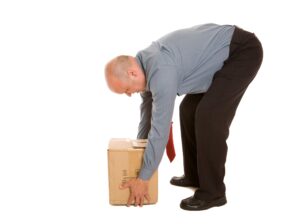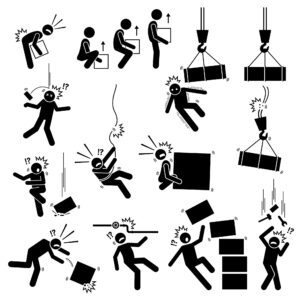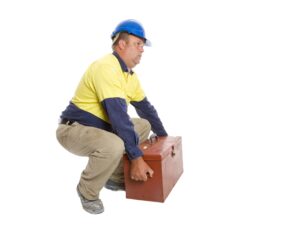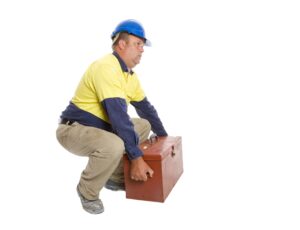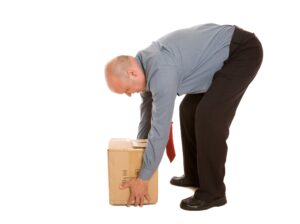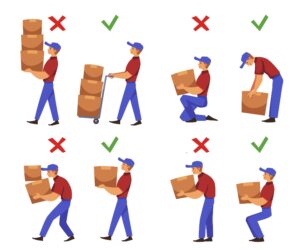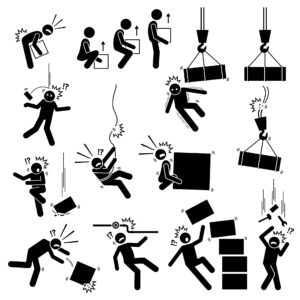If you are wondering, “what types of personal protective equipment can be used during manual handling?” this guide could assist you. We will explore the duty of care that employers owe their employees and how personal protective equipment (PPE) can keep employers safe in the workplace.
We’ll also look at different factors relating to the claims process; for instance, we’ll look at the amount of time you have to start your claim, what evidence can be acquired to potentially strengthen your case and how much compensation you could be awarded in the event that you’re successful.
Furthermore, we seek to address any queries you may have about No Win No Fee agreements as well as inform you of how a solicitor from our panel could help you.
If you have any questions, please do not hesitate to speak with an advisor from our team. They are available around the clock to provide you with a free consultation. To get in touch:
- Fill out our online enquiry form
- Call us on 0161 696 9685
- Use our live chat feature at the bottom of the page
Select A Section
- What Types Of Personal Protective Equipment Can Be Used During Manual Handling?
- Who Could Claim For Manual Handling Injuries Caused By A Lack Of PPE?
- How To Prove That Your Employer Was Negligent
- Estimating Payouts For Workplace Manual Handling Injuries Caused By A Lack Of PPE
- No Win No Fee Manual Handling Accident At Work Claims
- Learn More About Injuries Caused By Inadequate PPE
What Types Of Personal Protective Equipment Can Be Used During Manual Handling?
There are multiple forms of personal protective equipment (PPE) that you could require when carrying out work tasks. PPE aims to control your exposure to hazards and prevent harm from occurring. Examples of this could include:
- Protective footwear such as steel toe cap boots to prevent a foot injury or a toe injury if materials are dropped.
- A lifting belt to support your core and prevent a back injury
- Gloves to prevent burns on hands or other hand injuries.
- Eye protection, for example, goggles. This could protect your eyes if handling something fragile that could smash if dropped.
If you are still wondering, “what types of personal protective equipment can be used during manual handling?”, please get in touch with our advisors.
Who Could Claim For Manual Handling Injuries Caused By A Lack Of PPE?
Employers owe their employees a duty of care which is established in the Health and Safety at Work etc. Act 1974 (HASAWA). This legislation states that your employer must take all reasonable steps to stop you from being injured at work or whilst conducting work tasks.
Therefore, to be entitled to seek accident at work compensation, you must be able to show that:
- You were owed a duty of care
- It was breached
- You were injured due to this
Moreover, the Manual Handling Operations Regulations 1992 sets out the need for an employer to protect workers carrying out manual handling tasks from being injured, and how this can be done. For example, they could do this by avoiding manual handling tasks that can be carried out in another way that poses less risk, as well as assessing potential hazards involved in manual handling activities that cannot be avoided and acting accordingly.
If you believe yourself to have a valid manual handling claim, please contact an advisor from our team who can evaluate your case.
How Long Do You Have To Claim Compensation?
As set out by the Limitation Act 1980, you generally have three years to start the personal injury claims process. However, there are certain circumstances that could see this time limit extended. For instance, if the injured party is below the age of 18 when they were injured, the time limit is suspended.
In these cases, the time limitation would begin from their 18th birthday, at which point they have 3 years in which to make their own claim. Moreover, they could have a litigation friend claim for them. This could be any loved one over the aged of 18 but they must be approved by the court.
If you would like more information on time limits or litigation friends, please get in touch with an advisor from our team.
How To Prove That Your Employer Was Negligent
It is necessary to prove that you were injured due to employer negligence as well as the extent to which your injuries impacted you when making a personal injury claim. Here are some examples of how you can do this:
- Filling out the accident at work book if applicable
- Taking pictures of your injuries and the accident scene
- Seeking medical attention and keeping records produced
- Gathering CCTV footage of the incident
- Gathering witnesses’ contact details to allow statements to be taken at a later date
- Proving any financial losses that have been incurred through receipts, invoices or bank statements
If you would like any assistance with this process, please get in touch with our advisors, who can assist you. Furthermore, they could put you in contact with a solicitor from our panel who can help you with the process of claiming.
Estimating Payouts For Workplace Manual Handling Injuries Caused By A Lack Of PPE
The compensation that will be awarded for a successful claim could be made up of two heads. General damages aim to reimburse you for any physical or psychological pain and suffering that is caused by your injuries.
We have included a table of potential compensation amounts that have been taken from the Judicial College Guidelines (JCG). This is a document that is used by legal professionals when valuing claims. However, these amounts should only be used as a guide due to each personal injury claim being unique.
Compensation Amounts
| Body Part | Severity | Compensation Bracket | Details |
|---|---|---|---|
| Head | Moderately Severe | £219,070 to £282,010 | The injured person will have endured serious disabilities and will be substantially dependent on others. |
| Hand | Loss of hand | £140,660 to £201,490 | The total or effective loss of both hands. |
| Hand | Moderate | £5,720 to £13,280 | Crush injuries, penetrating wounds, soft tissue type and deep lacerations. |
| Back | Severe (i) | £91,090 to £160,980 | The most severe of back injuries that includes damage to the spinal cord and nerve roots. |
| Back | Moderate (ii) | £12,510 to £27,760 | Frequently suffered injuries, for example, soft tissue injuries resulting in a prolonged acceleration and/or exacerbation of a pre-existing back condition. |
| Wrist | Loss of function | £47,620 to £59,860 | An injury that leads to the complete loss of functionality in the wrist. |
| Wrist | Very minor | £3,530 to £4,740 | A minor fracture or soft tissue injuries that require the application of plaster or bandage for a matter of weeks and fully recover within a year. |
| Elbow | Severe | £39,170 to £54,830 | A severely disabling injury to the elbow. |
| Knee | Moderate (i) | £14,840 to £26,190 | An injury that results in a dislocation, torn cartilage or meniscus and leads to symptoms such as minor instability, wasting, weakness, or other mild future disability. |
| Shoulder | Serious | £12,770 to £19,200 | The dislocation of the shoulder as well as harm to the lower part of the brachial plexus. |
What Are Special Damages In A Workplace Accident Claim?
Special damages could also be included as part of your payout and can be used to reimburse for any financial losses. This could take into account areas such as:
- Home renovations that you need to cope with your injuries (for example, widening doorframes to assist a wheelchair user getting around their home)
- Care costs
- Medical expenses
- Travel costs to and from medical appointments
- Loss of earnings
If you would like a personalised estimate in terms of how much compensation you could be owed, please get in touch with an advisor from our team.
No Win No Fee Manual Handling Accident At Work Claims
You might find it beneficial to be represented by a No Win No Fee solicitor. They could offer their services via a Conditional Fee Agreement (CFA). If you enter a CFA, you only have to pay for the services provided by your solicitor if your claim is successful. This means that if your claim is lost, you won’t be charged for the work they’ve done. Furthermore, there won’t be any upfront or ongoing fees for you to pay them as they work on your claim.
If your accident at work claim is successful and you’re awarded compensation, you will owe your solicitor a percentage of your award which will be subtracted from your settlement. However, this will be capped by law, which ensures that you receive the majority of your compensation.
If you would like to discover whether you are eligible to be represented by a No Win No Fee solicitor, please get in touch with our team.
Speak To An Expert
You can speak with one of the advisors from our team about your potential claim. They are happy to offer you a free consultation at a time that suits you best, and they could set you up with a solicitor from our panel if you have a valid claim.
To get in touch:
- Fill out our online enquiry form
- Call us on 0161 696 9685
- Use our live chat feature at the bottom of the page
Learn More About Injuries Caused By Inadequate PPE
Here are some more of our guides that could be of use to you when claiming for a manual handling injury at work:
- What could a personal injury claim interim payment compensate you for?
- I had an accident at work – could I claim after leaving the company?
- Does my employer pay my work-related injury claim?
We have also included further guides that could be helpful for you when making an accident at work claim:
- NHS – When to call 999
- The Personal Protective Equipment at Work Regulations 1992
- Health and Safety Executive (HSE) – Manual Handling At Work
Thank you for reading this guide. If you are still wondering, “what types of personal protective equipment can be used during manual handling?”, please do not hesitate to get in touch with our advisors. They could also offer you free advice about making a potential claim.
Written by BP
Edited by FS



